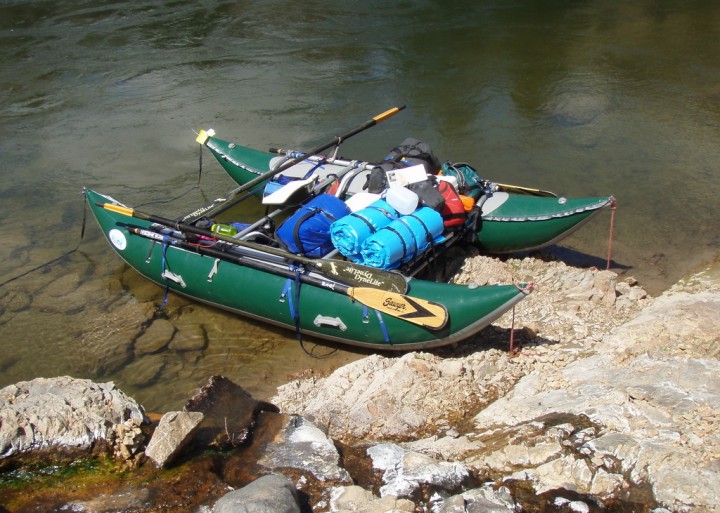Team NRS kayaker and longtime raft guide Devon Barker-Hicks had to see for herself what the cataraft craze is all about. Here’s what she learned.
I live at the confluence of the Little Salmon and the Main Salmon Rivers. I grew up rowing rafts but never a cataraft. Each spring, as the “Little” begins to flow, the catarafts begin popping up on trailers all over Riggins. I often launch my kayak with these inflatable catarafts. I was intrigued to watch them punch holes and surf waves. I just had to try it for myself.

I’ve found that there are a lot of differences between rowing a raft vs. a cataraft. You row forward of center; this is much different than most traditional oared boats. It took me a little while to adjust to having so much length behind me. You also need to wear more layers, as it is a much wetter ride. In kayaking, I wear more layers up top, but it is reverse in a cataraft. I needed two pairs of socks and fleece bottoms.
After adjusting to being more forward and wearing the right amount of clothes you will quickly notice how maneuverable the cat is. If you ever struggled to row a raft, a cataraft is for you. I could make my moves much easier and could recover if I got off line. The one downfall is that you must think about bracing with your feet at all times. You can relax, but you need to have pressure on your feet. I found this out my first day on the Little Salmon. I ran a larger drop and then relaxed in the pool below. I am not sure if I took my feet off the cross bar, but before I new what happened I was floating between my tubes. Right, there is no floor between the tubes on most cats.

I have now rowed a cataraft over 400 miles and have not fallen in again, yet. I even managed to slide down the ramp on the Middle Fork of the Salmon (MF) without falling off. The maneuverability of the cataraft versus a raft allows you to surf. I have included a video of my first surf on the MF. A cataraft is a great surfing machine and is much more comfortable than a kayak over an extended period of time.
Really, a cataraft is a great option between a raft and a kayak. A 13’ foot cat can also carry overnight gear for a little more than one person and still be a blast to row. Be careful not to overload a cataraft, as it will lose its performance and ease of use. We had 13’ and 14’ catarafts on our MF trip and easily took all our gear for three people (plus my kayak so I could surf my kayak as well). It is important to have as much of your load/weight as forward as possible. See the 14’ cat loaded at Hospital Bar hot springs on the MF.

It is also important to try a variety of oars and lengths. I like to row with a slightly longer oar, but it needs to be light. The lighter the oar the easier it was for me to use. I wanted my oars to be as light as my cataraft. Having a light set up is a big advantage over a raft so the oars are just as important as the tubes and the frame. I am 5’4”, and having the right gear makes a big difference for me on the water. I used three different oars, but settled on the Sawyer Square Tops. They worked great and did not hurt my shoulders. I felt like I could row all day with these oars.

A cataraft is also a great craft if you own a car versus a truck. You can break down your cataraft and fit it into and on top of a Subaru. It is also light enough that you can lift/drag it to the water on your own or with the help of just one person.
If you want to learn to row, or are ready for a change, I would highly recommend trying out a cataraft on your local river. I sure wish I had learned to row a cataraft as a young girl instead of a Havasu raft.
Hope to see you on the water!
Paddle in Peace,
Devon Barker-Hicks